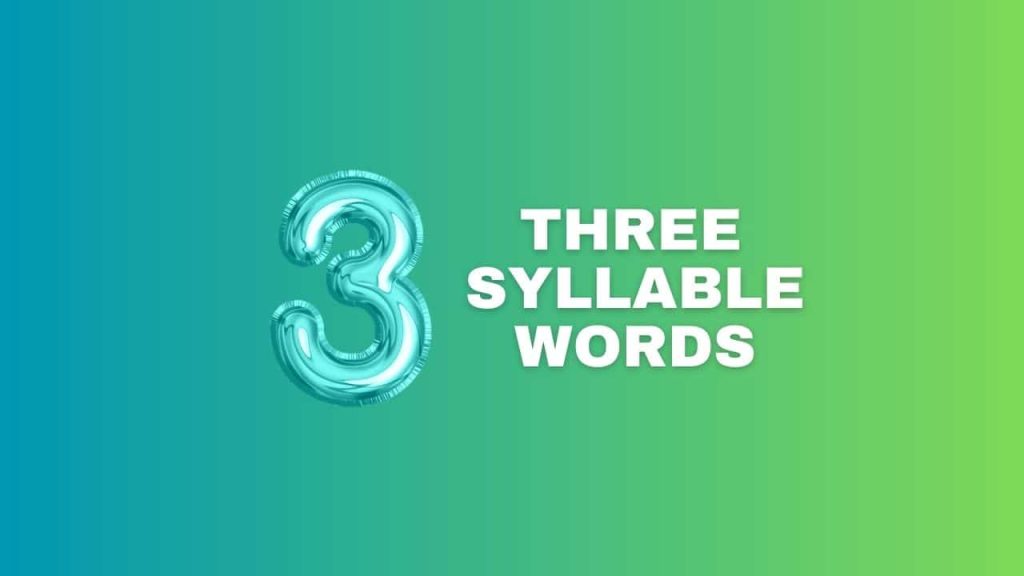Words with 3 syllables are common in English, appearing in everything from everyday objects to complex ideas. Despite their prevalence, many of us overlook their importance.
These words add rhythm and variety to our speech and writing, making communication more engaging.
In this blog post, we’ll dive into 3 syllable words.
By the end of this article, you’ll better understand 3 syllable words and how to use them effectively in your communication.
Let’s start our journey into the rhythmic world of 3 syllable words.
Importance of Linguistic Diversity
Language is more than just a tool for communication; it’s a window into different cultures and ways of thinking.
Exploring various languages opens our minds to new perspectives and improves our ability to connect with people from diverse backgrounds.
Learning about different languages can make our brains more flexible and better at solving problems.
By studying various languages, we can learn new ways to express ideas and understand how people from other cultures think.
Relevance of Studying 3 Syllable Words

3 syllable words play a key role in many languages, making them important for anyone learning a new language.
These words often serve as the building blocks for more complex language structures, helping learners develop a strong foundation.
3 syllable words are frequently used in daily conversations, books, and media.
Understanding how 3 syllable words are structured and used helps grasp language patterns and sounds.
These words are often easier to say and remember, which aids in clear communication.
For example, words like “banana” in English, “familia” in Spanish, and “citron” in French are common in their languages and reflect unique cultural aspects.
Significance of 3 Syllable Words
1. Commonality in Language Structures
3 syllable words are found in many languages, playing a key role in communication.
These words pop up often in daily speech, no matter your language.
They help form the base for more complex phrases and sentences, showing common patterns in how languages work.
For instance, words like “banana” in English and “family” in Spanish show how widely used 3 syllable words are.
These words create familiar rhythms and sound patterns that we hear often.
By understanding how common these words are, we can better grasp the basic building blocks of languages.
2. Ease of Pronunciation and Memory
One of the great things about 3 syllable words is that they’re usually easier to say and remember.
This makes them very helpful for people learning a new language. The balanced structure of these words helps create smooth, natural speech.
3 syllable words often have a rhythm that sticks in our minds, making them great tools for learning and remembering new words.
For example, the French word “citron” is simple enough for beginners to handle.
The natural flow of these words fits well with how we normally speak, making them easier to learn.
3. Role in Language Learning and Vocabulary Expansion
Getting good at 3 syllable words is a big step in growing your vocabulary and becoming fluent in a language.
These comprise many daily words, which is crucial for good communication.
Learning 3 syllable words often introduces us to important word parts like prefixes, roots, and suffixes.
As you improve at using these words, you’ll likely feel more confident using the language overall.
For instance, learning a Japanese word like “sakura” can help you understand more complex ideas and cultural meanings.
Familiarity with 3 syllable words builds a solid foundation for more detailed sentences.
Examples from Different Languages
1. English: “Banana”
“Banana” is a perfect example of a 3 syllable word in English. It’s a common fruit name that’s easy to recognize and say.
The simple spelling helps with pronunciation, making it a great word for language learners. Kids often learn “banana” early because of its fun, repetitive sounds.
You’ll hear this word often in everyday talk, recipes, and phrases like “going bananas.” Its clear sounds make it useful for practicing stressing syllables in English.
2. Spanish: “Familia”
“Familia” (family) is an important three-syllable word in Spanish. It reflects how much Spanish-speaking cultures value family.
You’ll hear “familia” often in daily chats and see it in many cultural sayings.
This word helps learners understand the strong family ties in Spanish-speaking communities.
It’s used in various situations, from casual family get-togethers to official paperwork.
3. French: “Citron”
“Citron” means lemon in French and is a common 3 syllable word.
It pops up a lot in French cooking and food talks.
Learning “citron” can help you understand French recipes and chat about food, a big part of French culture.
This word shows how French has influenced cooking words around the world.
4. Japanese: “Sakura”
In Japanese, “sakura” (cherry blossom) is more than a 3 syllable word—it’s a cultural symbol.
It stands for beauty, new beginnings, and how life is always changing.
“Sakura” is key in many Japanese traditions, like the cherry blossom viewing parties called Hanami.
This word is found in Japanese poems, songs, and everyday talk. Learning about “sakura” can teach much about how Japanese people see beauty in nature.
5. German: “Geburtstag”
“Geburtstag” means birthday in German and is a good example of how German often joins words together.
It comes from “Geburt” (birth) and “Tag” (day).
This word is used a lot for both casual and formal events. In German-speaking places, birthdays are important, so “Geburtstag” is a handy word to know.
It’s used for parties, on forms, and in everyday life.
Learning this word can help you understand how German builds words and gives you a glimpse into German social customs.
Practical Applications
1. Enhancing Vocabulary in Language Learning
3 syllable words are key building blocks for growing your vocabulary when learning a new language.
These words often form the basics you need for everyday communication.
They’re stepping stones to understanding more complex language structures commonly found in language courses and learning materials.
For instance, practicing words like “banana” in English or “familia” in Spanish can help you remember and use them more easily.
2. Improving Pronunciation and Fluency
Working on 3 syllable words can boost your pronunciation and help you speak more smoothly in a new language.
The rhythm of these words helps you get better at stressing the right syllables and using the right tone.
Regular practice with these words can make your speech clearer and help you feel more confident.
Words like “sakura” in Japanese or “citron” in French are great for practicing different stress patterns and unique sounds.
3. Usage in Educational and Linguistic Research
3 syllable words are valuable tools in education and language research.
They’re often used in studies about how people learn languages, helping researchers understand learning patterns and common challenges.
These words frequently appear in textbooks and language courses to teach grammar, sentence structure, and vocabulary.
Language experts also analyze 3 syllable words to explore how sounds, word structures, and meanings work in different languages.
For example, researchers might use a word like “Geburtstag” in German to study pronunciation challenges and find ways to overcome them.
Conclusion
3 syllable words are more than words; they reveal cultural nuances and language structures.
From the everyday “banana” to the culturally rich “sakura,” these words enhance language communication and understanding.
Mastering 3 syllable words is key to fluency for language learners. They improve pronunciation, expand vocabulary, and offer insights into word formation.
Next time you encounter a three-syllable word, appreciate its rhythm and meaning. Consider its place in the language and culture.
Challenge yourself to learn a new 3 syllable word in a language you’re studying.









One Comment
vavada: вавада – вавада зеркало